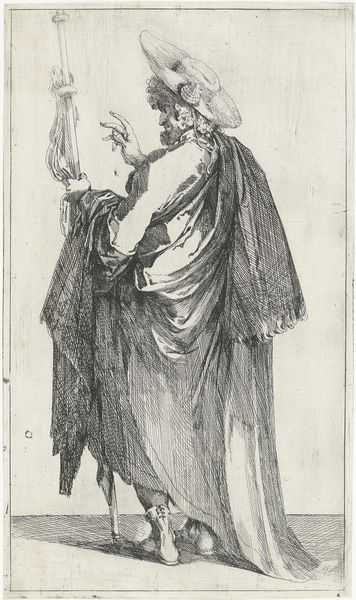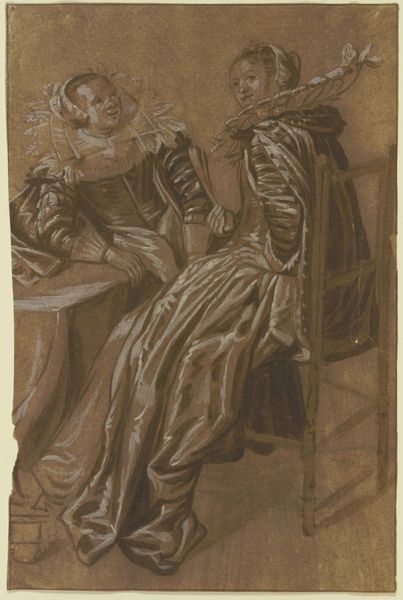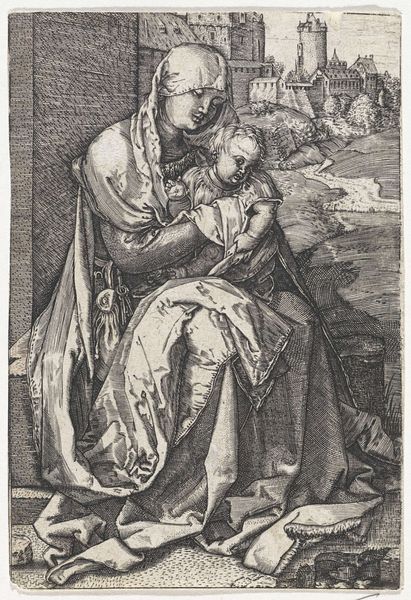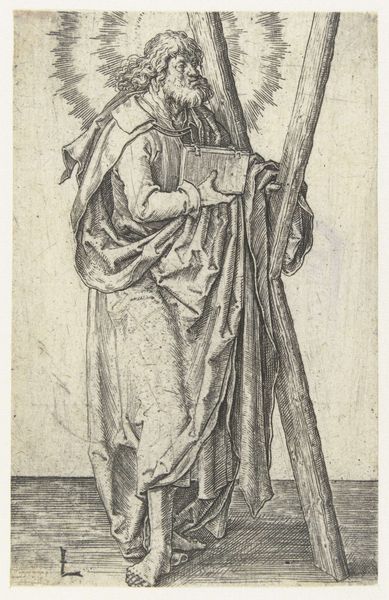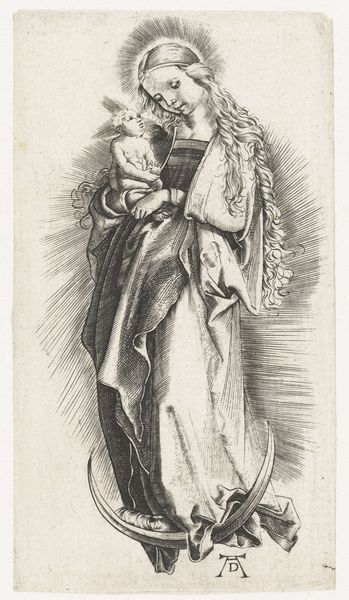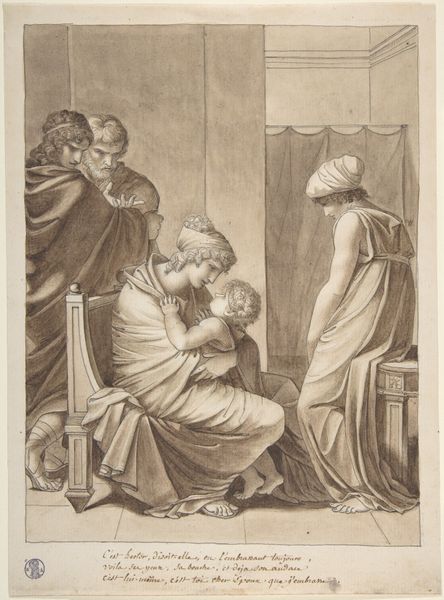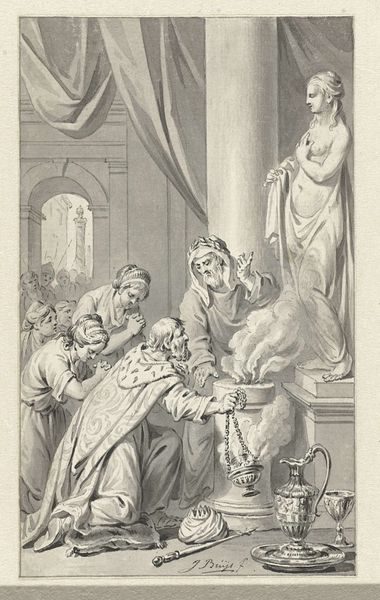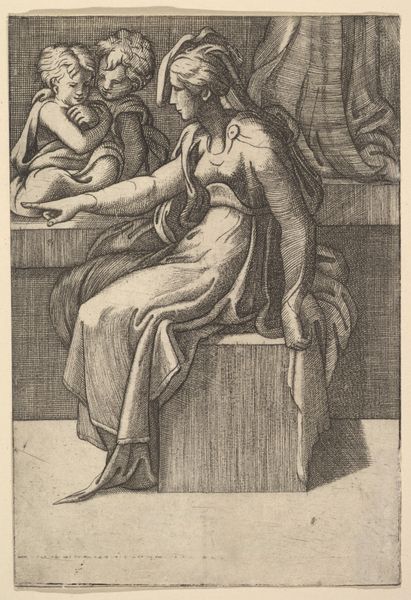
print, engraving
#
portrait
# print
#
figuration
#
history-painting
#
italian-renaissance
#
engraving
Dimensions: height 285 mm, width 198 mm
Copyright: Rijks Museum: Open Domain
Editor: This is "The Persian Sibyl," a Renaissance engraving by Michele Greco, dating sometime between 1534 and 1609. The fine lines give it a delicate, almost ethereal quality. The fabric is very realistically depicted. What can you tell me about it? Curator: Considering Greco's engraving of the Sibyl, I think we must examine it beyond a simple aesthetic appreciation. Look at the lines: engraved painstakingly, not spontaneous strokes. Engraving as a *process* implies reproduction, dissemination. A single image multiplying across early modern Europe, isn't that interesting? Editor: It is! It changes how people access art. How does this influence your understanding of the image? Curator: This engraving makes art available to a broader audience beyond the wealthy patrons of original paintings. The artist’s labor, transferred into the meticulous execution of the engraving, has created a commodity. But tell me, how does the very materiality of the *print*— the ink, the paper – shift our understanding of what “art” is here? Editor: Hmmm. Well, it's not unique anymore, like a painting, but it also brings it to more people. It’s not just an object of beauty but also a product of its time, of evolving printmaking technology. Curator: Precisely! It prompts us to question traditional hierarchies in art based on material rarity. By dissecting its means of production, circulation, and consumption, this seemingly simple engraving unveils a far more complex interplay between artistic creation, commerce, and cultural dissemination during the Renaissance. Editor: Wow, that is a totally different way of approaching this artwork, highlighting how its existence relies on a network of labor, material and technologies. I’ll definitely keep that in mind going forward.
Comments
No comments
Be the first to comment and join the conversation on the ultimate creative platform.
